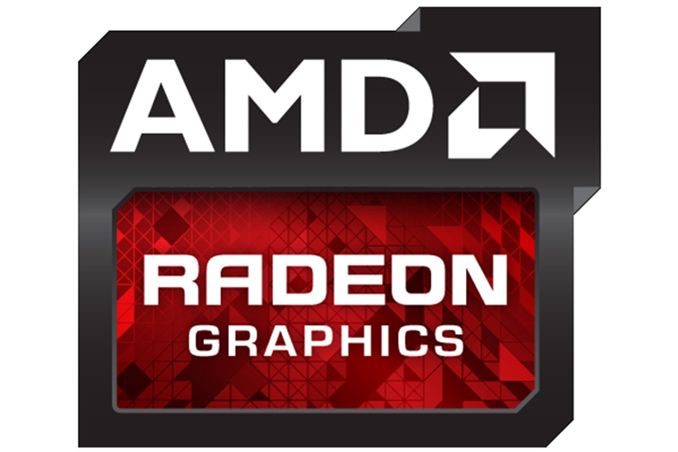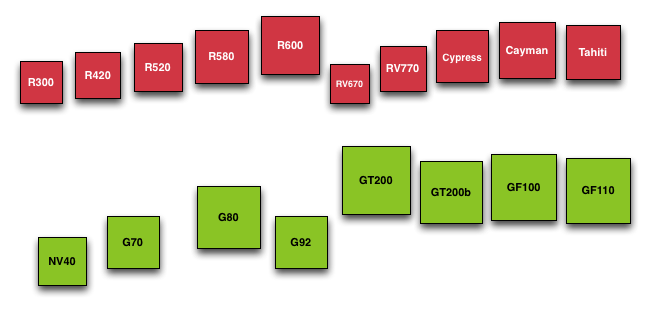AMD Teases Next Enthusiast GPU: Still 28nm, 23% Smaller Than GK110
by Ryan Smith on September 18, 2013 11:00 AM EST
Rumors aside, after AMD’s unexpected preview of their 2013 GPU plans back at the start of this year the company has been mum-as-usual on the matter of their future GPUs. At the time AMD announced that they would have a new GPU microarchitecture by the end of this year, and as 2013 slowly winds down the launch of that new microarchitecture draws near. Normally in these situations we would see AMD continue to stay quiet until they’re ready to fully unveil their products, but with the launch of that new microarchitecture already confirmed, AMD has unexpectedly unveiled a couple of details about one of their forthcoming GPUs in an interview with Forbes.
Interviewing the Corporate VP & GM of AMD’s Graphics Business Unit, Matt Skynner, Matt offered up a couple of basic but important details about AMD’s future plans. First and foremost, AMD’s next enthusiast GPU – already strongly implied to be the launch vehicle for their forthcoming microarchitecture – will be a 28nm product. Explaining why, Matt specifically states that “at 28nm for an enthusiast GPU, we can achieve higher clock speeds and higher absolute performance.” With traditional AMD GPU fab TSMC still ramping up for 20nm anyhow this doesn’t come as a great surprise, but it does put to rest any rumors of a 20nm product launch one way or another.

More interesting perhaps is that Matt also gave Forbes a ballpark number on the die size of their new GPU: GK110 is still 30% bigger than the new GPU, or inverted the new GPU is 23% smaller than GK110. While AMD’s small die strategy has been dead for some time, the company has still shied away from large GPUs for various reasons, their largest GPU since the ill-fated R600 (HD 2900 XT) being the 389mm2 Cayman GPU at the heart of the HD 6900 series. 23% smaller than GK110 would put the die size of AMD’s future GPU at around 425mm2, making it slightly larger than Cayman, or roughly the same size as R600. These are ballpark figures of course, so we’ll know more once the GPU formally launches, including of course how well that large die and new microarchitecture translate into performance.
The full interview can be found over at Forbes. Along with teasing AMD’s next enthusiast GPU, Matt also briefly discusses AMD’s software/driver plans, game bundling, the Radeon HD 7990, and more.
Source: Forbes (via Beyond3D)










49 Comments
View All Comments
Da W - Wednesday, September 18, 2013 - link
New consoles are 7870 caliber. I doubt they will push PC gaming. PC gaming will push PC gaming.DanNeely - Wednesday, September 18, 2013 - link
Programming closer to the bare silicon always gives consoles an advantage over an equivalent PC GPU; so they still might be competitive with the best PC graphics next year. Regardless the big gains in PC gaming graphics will probably come in a few years when the XB360 and PS3 are deprecated and developers are able to put all the resources they previously needed to scale down to a 2005 era GPU into maxing out 2015 or 2016 models.jasonelmore - Wednesday, September 18, 2013 - link
wtf? not even close. it's mobile SOC gpu vs full fledge dedicated, not even closedylan522p - Wednesday, September 18, 2013 - link
How is it a mobile SOC? Just because they use 8 mobile cores doesn't make it a mobile SOC.nunomoreira10 - Wednesday, September 18, 2013 - link
new consoles will definitely push pc gaming, there are several games that run 1080p and 30fps on the new consoles, push that to 120fps or 1440p and 60fps and you will need 4 times the power, rise some effects like dynamic lights, shadows, aliasing, draw distance and it will kick the hell of the best pc you can makesuperjim - Wednesday, September 18, 2013 - link
The PS4 is actually closer to a 7850 and I agree they won't push PC gaming even it had a GTX 780 in it.B3an - Wednesday, September 18, 2013 - link
"PC gaming will push PC gaming" ... no it wont. Look at PC games over the past few years, pretty much all console ports with minor graphical tweaks, if any. Yet the PC version requires superior PC hardware to get the same frame rates as the console version. Theres no dedicated PC games that really push things forward. It's not like when the first Crysis came out on PC and blew everything else away because it was totally designed for PC hardware - those days are gone. We now have to rely on consoles to push things forward.With all the RAM available to games on the new consoles (around 5GB) i'm atleast expecting to see some very high res textures on both the consoles and the PC ports. Over the next year we will atleast see a big increase in texture res on PC games and the recommended VRAM will shoot up. Look at BF4 for instance, they recommend 3GB VRAM.
airmantharp - Wednesday, September 18, 2013 - link
Hilarity, all around. The PC versions are the same games running on engines that have been reworked for years to make use of the extra resources available.But you are right about the textures/in-game assets. If a console game can use 4GB of RAM for graphics, expect to need 6GB minimum per GPU just to turn the details up- and that's before MSAA or anything else that might jump up the per-pixel memory requirements. I'm not getting a card with less than 8GB/GPU to replace my 2GB GTX670s. I'm shooting for 4k, full details enabled, in a year or two, probably on Haswell-E as well.
Peanutsrevenge - Wednesday, September 18, 2013 - link
Look harder.Star Citizen will be PC only and designed for high end hardware (dx11 only for starters).
Peanutsrevenge - Wednesday, September 18, 2013 - link
Something like Star Citizen you mean? :-)